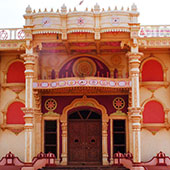Design Resource
Bidar Fort - Karnataka
An Ancient Bahmani Monument
by
Prof. Bibhudutta Baraland Srikanth B.
With the invention of Gunpowder in China at around the 9th century CE, the approach to fighting across the world shifted drastically, changing all the existing notions. The invention was then followed by new ways to use projectile weapons initially, later ending with the development of cannons, used extensively from the 13th Century CE. Sultan Muhammad Shah of the Bahmani dynasty was found to use gun powder during the siege of Belgaum in 1473 CE. King Babur, the pioneer of the Mughal dynasty in India, also encouraged improved artilleries, which led to his overthrow of Sultan Ibrahim Lodhi of Delhi. The forts in Karnataka, Bidar, Mudgal, and Bijapur are known for their large varieties of cannons dating back to 16-17th century CE, indicating their inevitable role in protection, capable of firing huge iron balls with the use of a large amount of gunpowder. They also exhibit types of ancient battle guns, with the capacity to hurl iron balls to a considerable distance. Small muzzle cannons raised on wooden trolleys and furnace wielded cannons, largely underlines the excellence of Indian metal casters and Blacksmiths, even during a period devoid of mechanization. The iron balls found from the site bear a diameter less than the bore size of the cannon from which it is fired. Here the iron balls possess varied diameters while cannons exhibit both differing lengths as well as diameters. These cannonballs measure, on an average 18cm in height and 55cm in circumference.



















